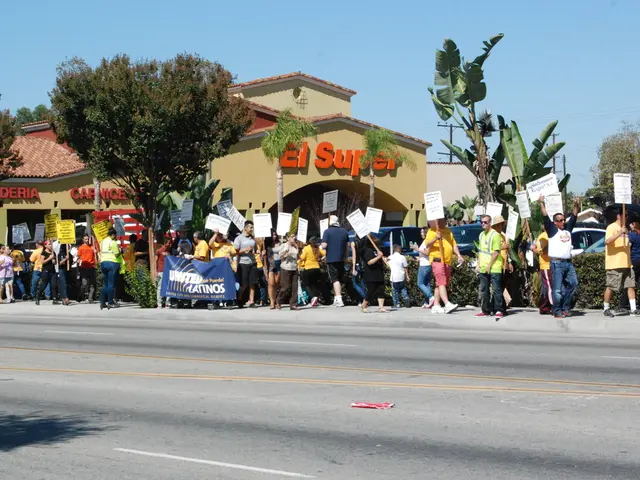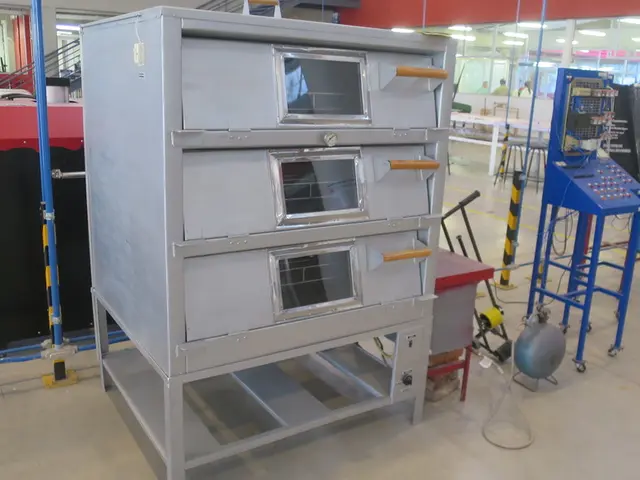Title: Embracing New Horizons for Workforce Leadership Development
In the dawn of 2025, the focus in the HR realm has shifted, placing leadership and management development atop the priorities list. A report by Gartner revealed that 70% of HR leaders feel their existing leadership programs lack potency, highlighting the urgent need to aid managers in navigating the evolving, intricate business landscape.
Today's businesses are driven by a surge in growth and operational efficiency demands. Leaders need to leverage skills once deemed unnecessary post-pandemic, combined with the need for agile decision-making due to rapid technological advancements. Managers are now handling intricate tasks alongside team oversight, creating a significant leadership gap due to the mismatch between traditional development methods and the current work environment.
Traditional Leadership Development Shortcomings
The modern business environment is shaped by three crucial dynamics:
- Paced Business and Technology Advancement:Genetic AI and other transformative technologies have redefined work methods, placing leaders at the helm of guiding teams in the usage of new tools and frameworks, even as they grapple with their own learning curve.
- Resource Scarcity:Organizations strive to achieve more with limited resources, forcing managers to oversee larger, more heterogeneous teams. This escalation of responsibilities has pushed beyond their capacity to lead effectively.
- Evolving Work Models:Hybrid and remote work settings have compromised traditional learning and informal mentorship opportunities, further complicating matters for managers.
These factors have expanded leadership responsibilities, often leaving managers overwhelmed and inadequately equipped. Conventional methods such as lectures or unstructured group discussions focus mainly on rote skill acquisition or unguided dialogue, failing to address the need for rigorous content and adaptive learning environments. Moreover, John Hattie's research on learning and teaching establishes that employees retain more when training is contextualized, collaborative, and directly linked to workplace challenges.
To nurture future-ready leaders, organizations must adopt an approach that combines hard skills with social learning opportunities while aligning with organizational objectives and crucial processes.
Addressing the Leadership Development Chasm
Despite efforts to innovate, many organizations miss the mark by failing to embed leadership development within the core of workflow. Half-day offsite workshops or lengthy e-learning modules no longer suffice. To rectify this, HR leaders must pinpoint the specific skills necessary for achieving their company's strategic goals.
Training should focus on coaching techniques that empower employees to think critically rather than rigidly follow procedures. Leaders might need assistance in handling distributed team leadership, fostering collaboration, trust, and accountability in remote environments. AI literacy will also be vital, as leaders need to know how to integrate AI tools into workflows, enhance productivity, and maintain a human-centered approach.
A Forward-Thinking Framework
To satisfy future requirements, HR leaders should adopt the following principles:
- Strategic Alignment:Begin by assessing the organization's long-term aims and identifying essential workflows and processes that ensure success. Identify the deficient skills required. Use these insights to outline the specific skills needed to develop team leaders.
- Relevance and Application:Design learning experiences that directly address real-world challenges. Leaders should apply their newly acquired skills to pressing business problems, ensuring the training delivers tangible results.
- Social and Collaborative Learning:Promote peer-to-peer interactions to allow leaders to share insights, brainstorm ideas, and contextualize lessons within their distinct environments.
- Continuous Iteration:Replace static training sessions with an ongoing growing cycle that includes periodic workshops, feedback loops, and opportunities for leaders to refine their skills over time.
By adopting this framework, organizations can empower future leaders to navigate the complexities of the rapidly evolving workforce efficiently.
Balance Present Needs with Long-Term Aims
Preparing leaders for the future is a continuous process involving both addressing immediate leadership voids and building a framework for sustainable development.
This begins with fostering a leadership culture that values agility, innovation, and accountability. Training programs should enable quick decision-making, adaptability, and cross-functional collaboration. Simultaneously, organizations must invest in tools and technologies that improve the learning experience, such as AI-driven training platforms that provide personalized recommendations or immersive simulations.
Embrace the Future of Leadership Development
In an era marked by technological advancements and shifting workforce dynamics, leadership development must evolve. HR leaders must create programs that focus on strategic alignment, relevance, and social learning. This will equip managers with the skills needed to thrive in a future-ready workplace.
The stakes are high. Organizations that fail to adapt risk falling behind. Yet, with a proactive approach, companies can navigate challenges currently and build a foundation for sustainable success in the upcoming years.
Dave Barnett, a renowned HR consultant, recently emphasized the importance of this forward-thinking approach in a seminar. He emphasized the need for HR leaders to collaborate with tech teams to integrate AI-driven solutions into their leadership development programs, ensuring personalized learning experiences for managers.
Moreover, Dave Barnett highlighted the significance of data-driven decision-making in determining the specific skill gaps that need to be addressed. By analyzing employee performance data and organizational objectives, HR leaders can tailor their development programs to the unique needs of their workforce, enhancing their ability to create future-ready leaders.







